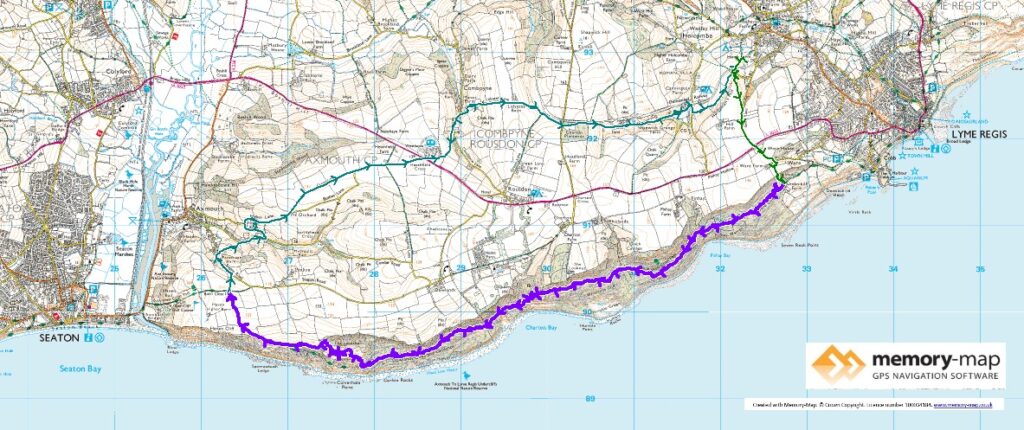9 km along the coast and 11.9 km inland
Most of section 61 in the SWCPA handbook
There are certain milestones that stand out in any endeavour, like the trip to Blackpool in “Strictly”, but for the South West Coastal path, one of them is the Lyme Regis to Axmouth undercliff. Partly because it is very different from most of the path and partly because there is a 9km stretch of path with no escape route.
We stayed with Frodo on a Campsite at Uplyme, as it says on the higher part of Lyme Regis and it was only a 2km walk, past Chimney Rock and down quite steep steps to where we left the path two days ago.
The Undercliff is a complex of landslides and extends basically from Lyme Regis to Seaton. As you entre this section there are various warning signs to remind you that the path is arduous and there is no permissible way back to civilisation until you reach the other end.
The undercliff used to be farmed until about 1900, but from then has mainly been left to become a National Nature reserve, and has become filled with mainly native trees, but a few other that have “escaped” from formal gardens nearby. The vegetation obviously grows well on the damp south fasing series of terraces produced by the landslips.
The path varies, small sections have been tarmacked some time in the past, but most are quite rough and you need to continuously watch you feet for tree-routs. There are lots of wooden steps and the occasional boardwalk. In spring there were the occasional muddy patches, but it would obviously be wetter and slippery following heavy rain.
The weather was quite strange, occasional warm sun, though mostly shaded by the trees, but mist hanging in the air and sometimes a cool wind.
It took us about 2 and a half hours to walk the 9km between alternative footpaths and so the warning about 3.5 to 4 hours between Seaton and Lyme Regis are not far wrong if you go right into the towns.
We returned following a series of footpaths and minor roads about another 9km back to the campsite, and almost followed the old railway for the last section.
